What can explain CNN’s grossly disproportionate coverage of Israel? It will be unsurprising to most that CNN.com’s Middle East page has an obsessive focus on the world’s only Jewish state. But can this be explained by population? By the existence of conflict? By the fact Israel gets U.S. foreign aid?
The numbers strongly suggest “no.”
Previously, CAMERA looked at all of the articles posted on CNN.com’s Middle East section during the month of July. That month, CNN wrote more articles about Israel’s judicial overhaul debate alone than it did about the entire rest of the region combined. That unequal trend continued into August and September.
A total of 99 new articles appeared in CNN’s Middle East section during July, August, and September 2023. Here is how that coverage broke down by country:
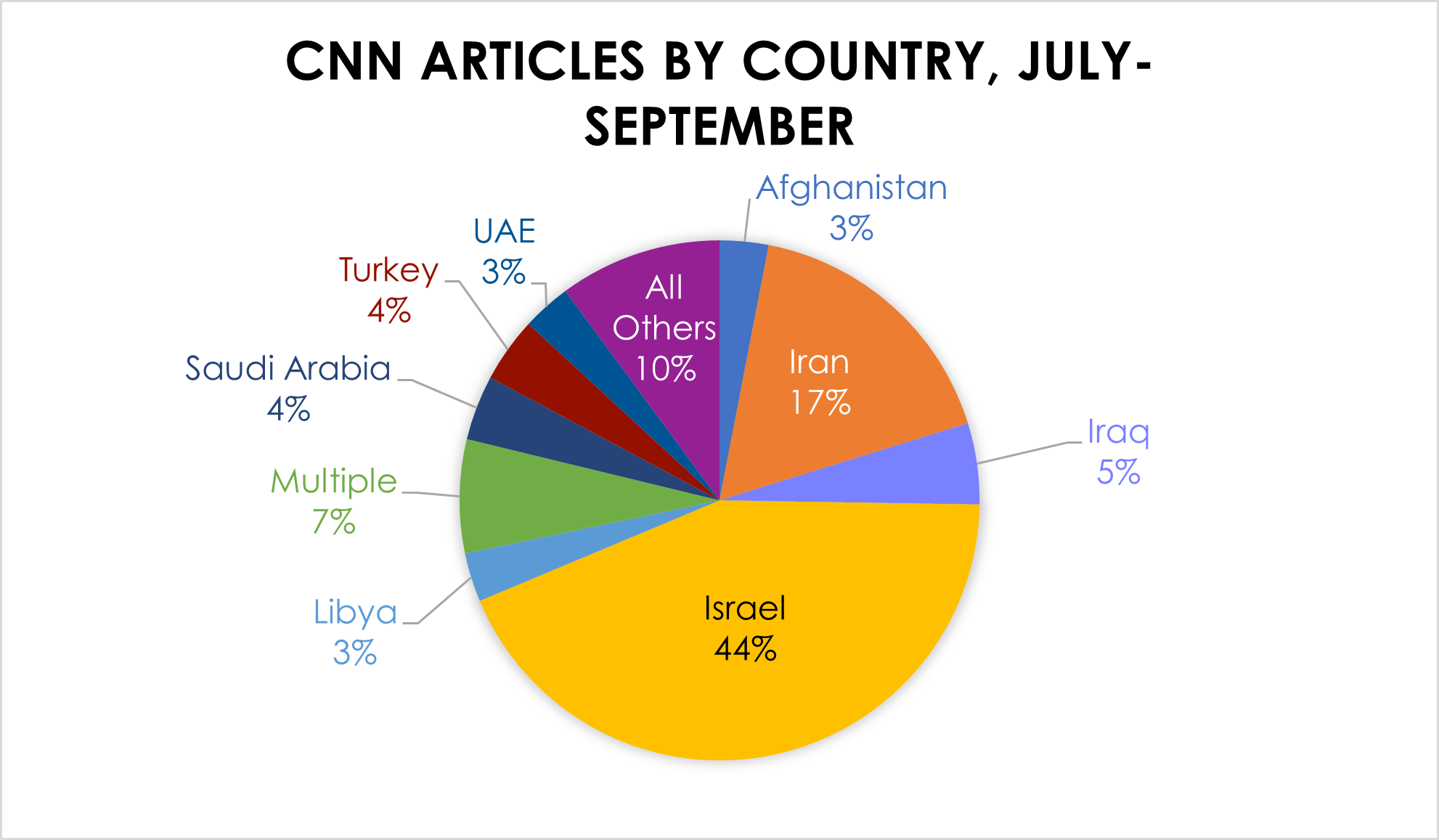
“Multiple” include articles that address issues affecting two or more countries (e.g., articles such as “New US-backed India-Middle East trade route to challenge China’s ambitions” or “Israeli warplanes target Syrian air defense battery.”).
Of those 99 articles, 43 focused mostly on Israel. That figure does not include articles about an Israeli airstrike in Syria and about the Tunisian president blaming “Zionists” for Storm Daniel (both are included in “Multiple”).
Worth noting are those countries that are not listed. Egypt, with the largest population in the Middle East, was the subject of only two articles. Sudan and Yemen, two war-torn countries, each had only one article. Lebanon, a country under the thumb of a U.S.-designated terrorist organization, Hezbollah, saw only one article, too. Qatar, a prominent player in Middle Eastern politics and conflicts, got zero articles written about it, as did Algeria, Bahrain, Jordan, and Oman.
Why does CNN cover the Jewish state nearly as much as the entire rest of the region combined?
Can it be explained by population size?
Given that Israel has one of the smallest populations in the region, including Palestinians in the West Bank and Gaza, the answer is quite obviously no. But it’s important to show just how disproportionate the coverage is in comparison to population sizes.
Looking at the countries for which there were three or more articles at CNN, it’s clear that there is disproportionate attention on Israelis and Palestinians. There is one CNN article for every 324,316 Israelis and Palestinians. It takes 65 times as many Turks, 42 times as many Afghans, 28 times as many Saudis, and 23 times as many Iraqis. For Yemen, which saw only one article written about it (on a derelict oil tanker in the Red Sea), it seemingly takes 100 times as many.
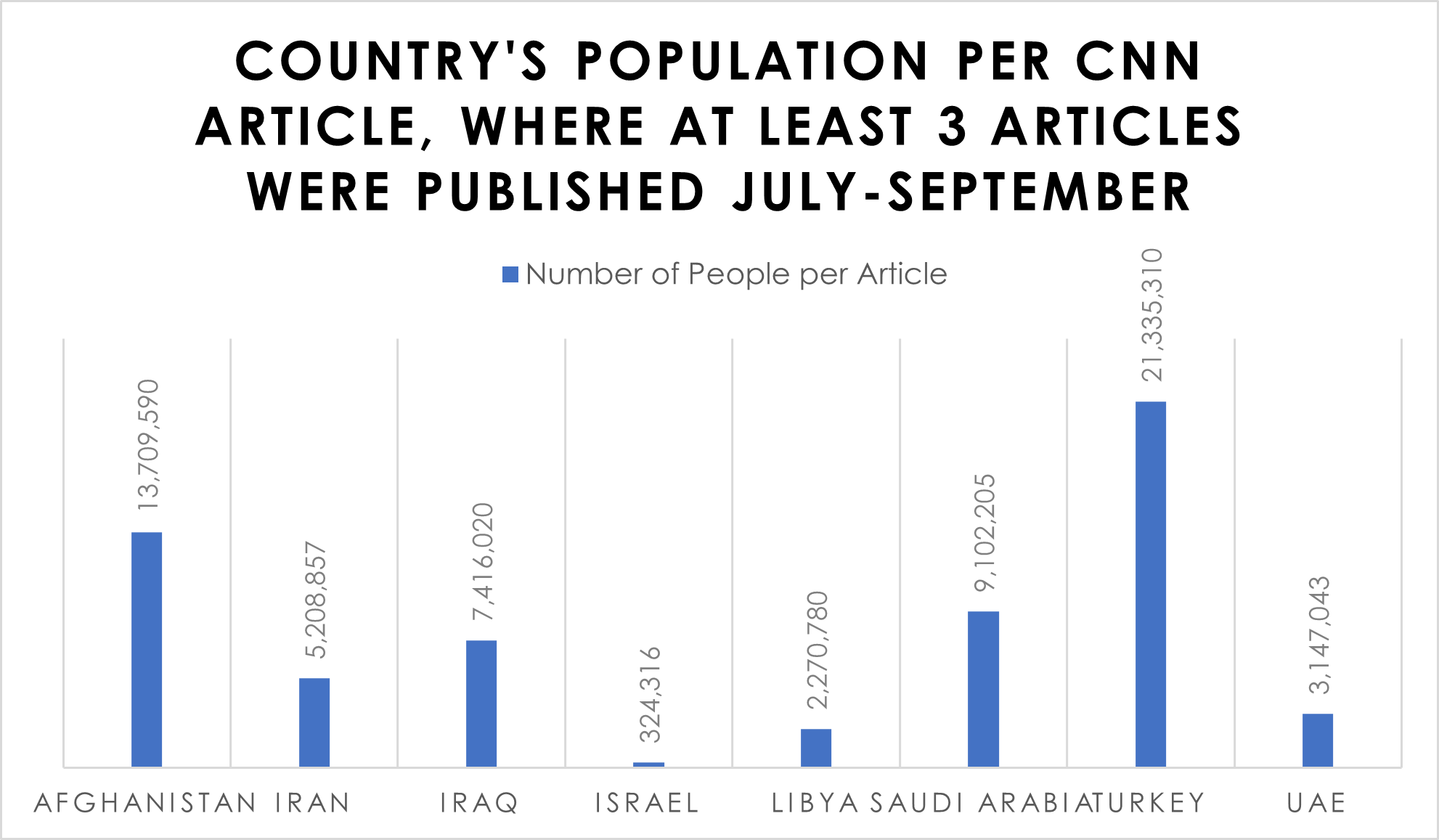
Population data via the World Bank.
Can it be explained by the existence and intensity of conflict?
No. Whether comparing the number of articles to fatalities in the previous calendar year (2022) or in the previous three months (April-June 2023),[1] Israel once again stands out as an outlier, requiring far fewer fatalities for an article to appear.
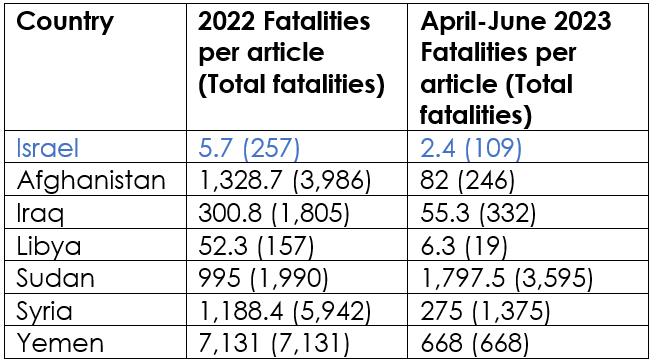
Conflict fatality figures via the Armed Conflict Location & Event Data Project dashboard.
It’s also worth putting these figures in their absolute terms. During April-June, Sudan saw 3,595 conflict-related fatalities, but was one of the main subjects of only two articles during July-September. During the same periods, Israel saw 109 conflict-related fatalities, but was one of the main subjects of 45 articles.
Clearly, the existence and intensity of conflict cannot explain the lopsided coverage of Israel.
Can it be explained by U.S. aid dollars?
No. A common attempted justification for the hyper-focused coverage of Israel is that because the U.S. gives a sizable amount of foreign aid to Israel, that justifies greater scrutiny by U.S. media outlets. But once again, the figures show that it isn’t the amount of aid a country gets that drives the amount of coverage on CNN’s Middle East page.
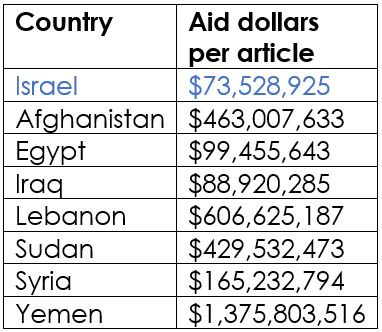
Using FY2022 figures from ForeignAssistance.gov.
That is, for Middle East countries that receive large amounts of U.S. foreign aid (over $100 million), Israel is still disproportionately targeted, and it takes the fewest number of dollars per article. It takes 6 times as many aid dollars for an article to appear on Afghanistan and Sudan, 8 times as many for Lebanon, and 19 times as many for Yemen. If it’s aid dollars driving scrutiny, why does the media weigh dollars involving Israel more heavily than those for other countries?
What else could it be?
Qualitative explanations are hard to measure, but also don’t seem to explain the lopsided nature of CNN’s Middle East page. If it’s about scrutinizing our allies, why were zero articles written about Jordan? If it’s about holding powerful countries accountable, why were there only four articles on Turkey, whose GDP is twice that of Israel’s? If it’s about holding “far-right” governments (as CNN frequently labels Israel’s) accountable, why is there so little scrutiny of the rest of the region, which is dominated by autocratic and socially and religiously conservative regimes? After all, Israel is far and away the freest country in the region, according to Freedom House .
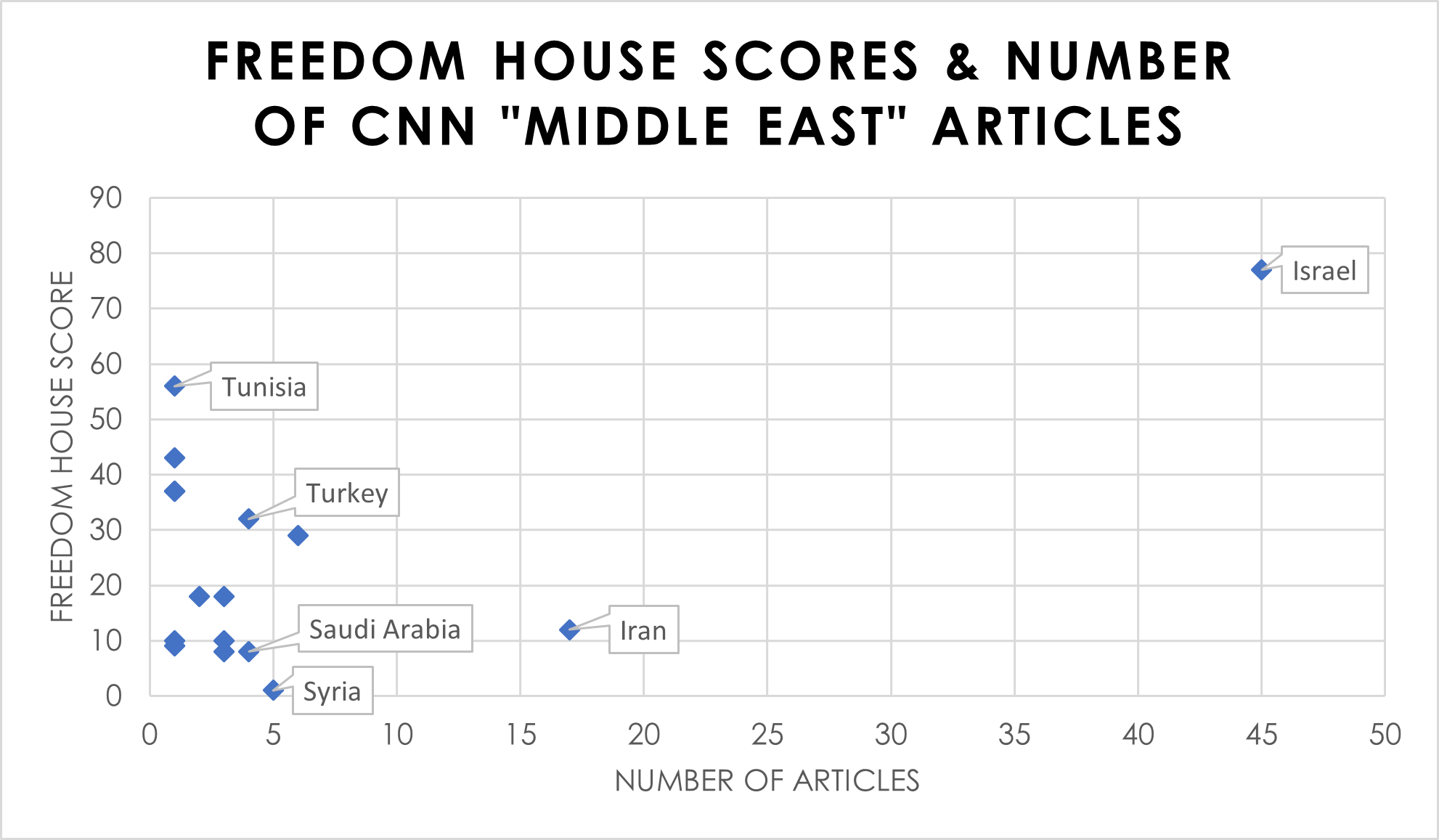
Scores via Freedom House. Higher scores mean a country is ranked as more free.
If even a fraction of the energy and resources CNN devoted to covering Israel’s judicial overhaul debate had gone instead to investigating the corrupt and incompetent warlords ruling Libya, perhaps something might have been done before the dams burst and over 10,000 lives were washed away. Why would holding Israel’s government to account matter that much more than holding to account those who rule over Egyptians, Algerians, or Jordanians?
Of course, it’s possible that this heavily skewed coverage is being driven by non-journalistic reasons, namely that CNN is writing what it believes its audience wants to read. Aside from the fact that this would suggest CNN is not so much a journalistic outlet as an entertainment business, this would also raise the question of how CNN would know its audience isn’t interested in the stories, peoples, and places that aren’t being adequately covered in the first place. What makes CNN think its audience isn’t interested in stories about Lebanon not only harboring a U.S.-designated terrorist organization, but effectively being subject to its whims? What makes CNN think its audience wouldn’t want to read about Qatar, which has used its vast oil wealth to influence education in the U.S., build a state-controlled media empire in Al Jazeera, and engage in geopolitical gamesmanship that often works to the benefit of terrorist organizations throughout the region, all while hosting a U.S. military base? Why wouldn’t the audience care about the plight of religious and ethnic minorities in places like Iraq or Egypt?
Without being privy to CNN’s internal decision-making, one can only guess what factors drive its coverage of the region, and why the one Jewish state is placed under the microscope in a way that no other state is. But it seems fair to say that the content and makeup of its Middle East page isn’t being driven by genuine journalistic motivations.
[1] At the time of this writing, complete figures were not yet available for July-September 2023.
